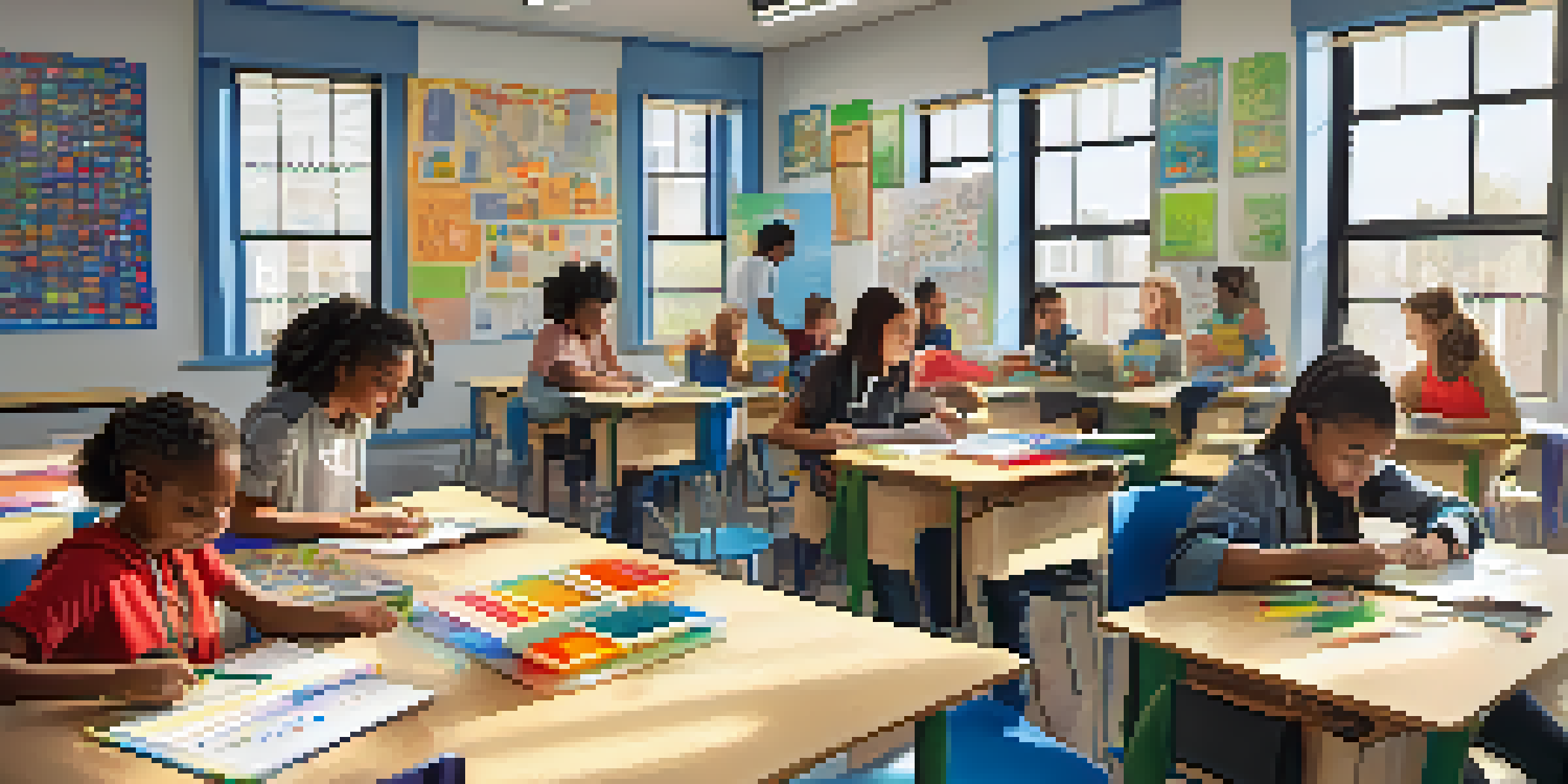Constructivism and the Development of Problem-Solving Skills

Understanding Constructivism in Education
Constructivism is a learning theory that emphasizes active participation. Rather than passively absorbing information, learners engage in experiences that shape their understanding. This approach promotes critical thinking by encouraging students to explore, ask questions, and draw connections.
We learn by doing. Only knowledge that is used sticks in your mind.
In a constructivist classroom, teachers act as facilitators, guiding students in their learning journeys. This method can be likened to a coach who helps athletes hone their skills through practice and reflection. As learners build their knowledge base, they develop a sense of ownership over their education.
By incorporating real-world problems into lessons, constructivism allows students to apply their knowledge meaningfully. This practical application is key to developing problem-solving skills, as students learn to navigate challenges that mirror those they might face outside the classroom.
The Role of Experience in Learning
Experience is at the heart of constructivism, shaping how we learn and grow. When students engage with hands-on activities, they create personal connections to the material. These connections deepen understanding and make learning more relevant and memorable.

Consider a student learning about ecosystems. Instead of reading about food chains, they might participate in a local conservation project. This active involvement not only reinforces knowledge but also cultivates skills like teamwork and critical thinking—essential components of problem-solving.
Active Learning Enhances Understanding
Constructivism encourages students to actively engage in their learning, fostering deeper understanding and critical thinking.
Through experiential learning, students encounter obstacles that require innovative solutions. They learn to adapt and find alternative paths, a vital skill in problem-solving that translates well into various aspects of life.
Collaboration as a Learning Tool
Collaboration is a cornerstone of constructivist learning, emphasizing the importance of social interaction. When students work together, they share diverse perspectives and ideas, enriching the learning experience. This interaction fosters a sense of community and encourages collective problem-solving.
The greatest danger in times of turbulence is not the turbulence; it is to act with yesterday's logic.
Think about a group project where students must design a sustainable city. Each member brings unique insights, and together they brainstorm, debate, and refine their ideas. This collaborative process mirrors real-world scenarios where teamwork is essential for addressing complex problems.
As students navigate group dynamics, they develop communication and negotiation skills. These are crucial for effective problem-solving, as they learn to articulate their thoughts and seek consensus in pursuit of common goals.
Encouraging Critical Thinking
Critical thinking is a vital skill nurtured through constructivist practices. Rather than accepting information at face value, students are encouraged to analyze and question. This analytical mindset is essential for effective problem-solving, as it leads to deeper insights.
For example, when faced with a historical case study, students might evaluate different viewpoints and their implications. This exercise not only sharpens their analytical skills but also prepares them to tackle multifaceted problems with a nuanced approach.
Collaboration Fosters Problem-Solving
Working together in groups allows students to share diverse perspectives, enhancing their collective problem-solving abilities.
By fostering critical thinking, constructivism empowers students to become independent thinkers. They learn to seek solutions creatively and recognize that multiple approaches can lead to successful outcomes.
Real-World Problem Solving
One of the strengths of constructivism is its focus on real-world problem-solving. By integrating authentic challenges into the learning process, students see the relevance of their education. This connection inspires motivation and a desire to apply their knowledge practically.
For instance, students might engage in projects aimed at addressing local community issues. Through this involvement, they not only develop problem-solving skills but also gain a sense of civic responsibility and empowerment.
When learners tackle real problems, they learn to think critically and creatively under pressure. This experience prepares them for future challenges, both in academic settings and in their personal lives.
The Importance of Reflection
Reflection is a fundamental aspect of constructivist learning that enhances problem-solving skills. After engaging in an activity, students take time to consider what worked, what didn't, and why. This introspection deepens their understanding and informs future actions.
For example, after completing a design challenge, students might discuss their thought processes and the obstacles they faced. This reflection helps them recognize effective strategies and areas for improvement, fostering a growth mindset.
Reflection Supports Lifelong Learning
Taking time to reflect on experiences helps students recognize effective strategies and learn from challenges, which is essential for personal growth.
By integrating reflection into learning, students become more self-aware and adaptable. They learn that problem-solving is not just about finding answers but also about learning from experiences, which is crucial for lifelong learning.
Constructivism in the Digital Age
In today's digital world, constructivism has evolved to incorporate technology as a learning tool. Online platforms and interactive resources provide students with opportunities for exploration and collaboration beyond the traditional classroom. This access enhances their problem-solving skills by exposing them to diverse perspectives.
Consider a scenario where students use simulation software to model environmental changes. They can manipulate variables, test hypotheses, and see the outcomes in real-time. This hands-on experience is invaluable for developing critical thinking and analytical skills.

Moreover, digital tools often allow for peer feedback, fostering a collaborative learning environment. Students can learn from one another, sharing insights and strategies that enhance their collective problem-solving abilities.
Conclusion: Embracing Constructivism for Future Success
As we navigate an increasingly complex world, the need for strong problem-solving skills is more important than ever. Constructivism offers a robust framework for developing these skills through active engagement, collaboration, and critical thinking. By embracing this approach, educators can prepare students for real-world challenges.
Incorporating constructivist principles into the classroom doesn't just benefit students academically—it equips them with essential life skills. They learn to approach problems with confidence, creativity, and resilience, traits that will serve them well in any endeavor.
Ultimately, fostering a constructivist learning environment can lead to empowered learners ready to tackle the challenges of tomorrow. By prioritizing problem-solving skills, we ensure that students not only succeed in school but also thrive in their personal and professional lives.